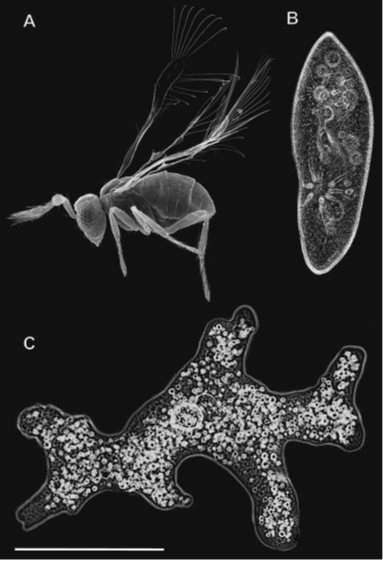
These wasps are not single-celled organisms though, and their brains alone contain 4600 neurons. For reference, the brain of a honeybee contains ~1 million neurons. Despite their extremely small heads (again, look at that head next to the SINGLE CELLED amoeba) the wasps can still fly, seek out mates, and find thrip eggs to parasitize. So…what? How?
I love how at the end of the article he describes a truly morbid detail about a completely different insect because
I needed to share the burden of knowing they exist and are out there, waiting.
Answer: “The lifespan of these wasps is only 5 days”
“it’s brain cells get rid of their own nucleus and all its stored maintenance information. The neurons already exist, so maintenance is the only task […] requiring DNA, and they don’t live long enough for that to matter at this point”
“No nucleus or DNA frees up half of a neuron’s volume”
Anyone know why Megaphragma mymaripenne’s genus has “mega” in the name?
“mega-, megalo-: […] big/great.” https://en.wikipedia.org/wiki/List_of_commonly_used_taxonomic_affixes#M
Because its mega small lol
sorry
Phragma means a divider. My guess is someone was saying these tiny bugs are extremely (mega) separate (phragma) from their relatives.

